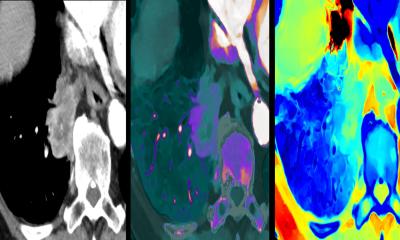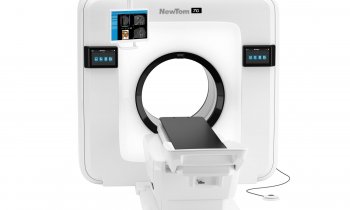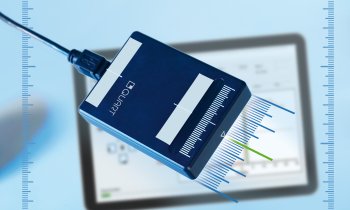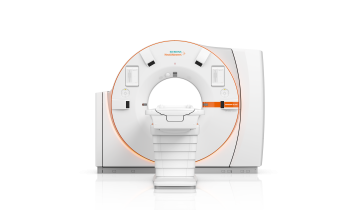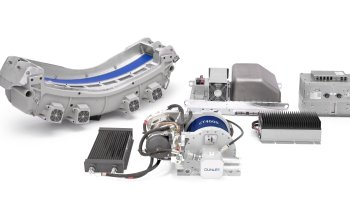Philips From X-rays to Motiva homecare
Michiel Bloemendaal
To learn more about the presence of Philips in healthcare - and particularly cardiology - our Netherlands correspondent visited the company in Amsterdam.
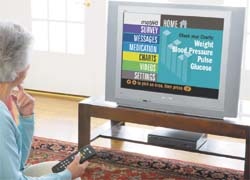
Not so long ago, Cor Boonstra, the then head of Philips, decided, that the company would be based in Amsterdam, capital of the Netherlands, and conveniently situated near Schiphol airport. A building, largely emblazoned with the name Philips, has towered there ever since.
That Philips has a long history might be generally known, along with its products: light bulbs, TV sets and other electronic devices. Less known is the fact that, since 1918, Philips has applied its skills and knowledge to the manufacture of medical products. In that period, Philips Research began investigations in Xray to -rays and in 1927 the firm bought the German company Müller & Co, which had specialised, since 1899, in X-ray applications. From X-ray technologies other techniques slowly developed to image the inside of the human body. Since acquiring some large medical companies, Philips has become one of the top three players in the manufacture of medical equipment. In cardiology Philips is even number one!
During our interview, Gert van Santen, Dirctor of Healthcare Communications for Europe, the Middle-East and Africa.epeatedly said that Philips is highly motivated. A device is not just ‘to make money’ - although no one in the company is averse to that - but the firm believes in the human being, who should benefit from their activities. Philips tries to understand the real needs of patients, as well as the medical specialist. To meet those needs it creates integrated, innovative solutions. Among these is the ‘cardiovascular care cycle’, which aims to detect cardiac defects at a very early stage: from screening & early diagnosis, via diagnostics to treatment and follow-up.
The fact, that these stages need all kinds of equipment, from monitors and CT scanners to defibrillators and IT-equipment, is a nice consequence for Philips. This made the firm an international market leader in cardiology.
Cardiology and future
According to the Dutch Heart Association, the Netherlands has more than 1,000,000 cardiac patients. The latest study from The American Heart Association revealed that one in three Americans has some form of vascular or heart disease (http://circ.ahajournals.org/cgi/content/short/113/6/e85). A great threat to the heart is vulnerable plaque, deposits of fatty substances, cholesterol, cellular waste products, calcium and other substances build up in the inner lining of an artery.
Considering the enormous numbers involved in these problems, it is vital to energetically attack them. This requires a multiple approach, which appears possible due to modern imaging techniques and medication: molecular healthcare, which makes it possible to trace and attack potential problems, such as plaque, at an early stage.
Overseas
It is thought that heart problems resulting from a high percentage of cholesterol, are typically problems of the West. In this respect one points at fat Americans and Europeans – just waiting for heart attacks.
‘Oriental people don’t have such problems, so there’s no market for Philips’, or so it was thought. However, the West has increasingly influenced oriental culture and lifestyle – including nutrition. A remarkable result is Japan’s currently high cholesterol percentages. These hardly existed until around five years. Then the first American fast-food hamburger restaurants arrived!
At home
Philips recognises that people are hospitalised through necessity, not by choice. That stay might begin in a ward and then, after surgery, be in an intensive care unity, then again in a cardiac care ward, and finally a general ward. Philips reasoned that a hospital stay could be shorter, and began to study how to do that. Line connections between the hospital and the patient’s home were devised to monitor the patient. Now, via a simple line connection (e.g. TV) a patient’s data can be recorded daily, so that a hospital cardiologist can observe his/her condition. The doctor can deduce whether there are problems and if another hospital admission is necessary, from answers given by a patient to questions such as: What is your weight? Have you taken your medication? How do you feel generally?
Although this programme, named Motiva, is in the test stage in Europe, in the USA the first commercial application is on the market. It has also won the Medical Design Excellence Award and has been nominated for the Top-5 Disease management Ideas 2005.
Results from studies of Motiva’s use will be presented at September’s World Congress of Cardiology in Barcelona.
The system might provide the answer to ever-increasing healthcare costs. Shortening a hospital stay is not only good for insurers, but also hospitals.
Philips today and in the future
Worldwide, about 30,000 people work in Philips Medical Systems departments, which include Imaging Systems, Ultrasound and Monitoring, Healthcare Informatics, New Ventures and Global Sales and Service – the latter in 63 countries. The company’s production plants are in the Netherlands, Germany, Finland, Israel and the USA.
That Philips has confidence in a glorious future can be heard in the words of its CEO Gerard Kleisterlee, who said, in a speech in Berlin this March: ‘I am very confident that, over the next few years, Philips will enter into many more mutually beneficial business relations and partnerships with healthcare providers’.
Let the patient profit from that!
30.08.2006
- cardiology (770)
- CT (602)
- display (438)
- economy (1046)
- markets (545)
- medical technology (1543)
- monitoring (374)
- X-ray (295)





